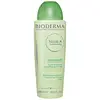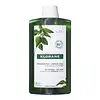What's inside
What's inside
 Key Ingredients
Key Ingredients

 Benefits
Benefits

 Concerns
Concerns

 Ingredients Side-by-side
Ingredients Side-by-side

Water
Skin ConditioningCaprylyl/Capryl Glucoside
CleansingPanthenol
Skin ConditioningMethylpropanediol
SolventPEG-15 Cocopolyamine
EmulsifyingSodium Lauroyl Oat Amino Acids
CleansingMannitol
HumectantXylitol
HumectantRhamnose
HumectantFructooligosaccharides
HumectantXanthan Gum
EmulsifyingLactic Acid
BufferingQuaternium-80
Propylene Glycol
HumectantVp/Dimethylaminoethylmethacrylate Copolymer
Ethylhexylglycerin
Skin ConditioningSodium Chloride
MaskingSodium Hydroxide
BufferingDisodium EDTA
Potassium Sorbate
PreservativePhenoxyethanol
PreservativeParfum
MaskingLinalool
PerfumingBenzyl Salicylate
PerfumingWater, Caprylyl/Capryl Glucoside, Panthenol, Methylpropanediol, PEG-15 Cocopolyamine, Sodium Lauroyl Oat Amino Acids, Mannitol, Xylitol, Rhamnose, Fructooligosaccharides, Xanthan Gum, Lactic Acid, Quaternium-80, Propylene Glycol, Vp/Dimethylaminoethylmethacrylate Copolymer, Ethylhexylglycerin, Sodium Chloride, Sodium Hydroxide, Disodium EDTA, Potassium Sorbate, Phenoxyethanol, Parfum, Linalool, Benzyl Salicylate
Water
Skin ConditioningDisodium Laureth Sulfosuccinate
CleansingDecyl Glucoside
CleansingLauryl Betaine
CleansingCeteareth-60 Myristyl Glycol
EmulsifyingLaureth-3
EmulsifyingGlyceryl Laurate
EmollientUrtica Dioica Root Extract
Skin ConditioningCaprylyl Glycol
EmollientCitric Acid
BufferingParfum
MaskingCI 42053
Cosmetic ColorantMaleic Acid
BufferingPolyquaternium-22
Polysorbate 20
EmulsifyingPropylene Glycol
HumectantSodium Benzoate
MaskingSodium Chloride
MaskingTrisodium Ethylenediamine Disuccinate
CI 15985
Cosmetic ColorantWater, Disodium Laureth Sulfosuccinate, Decyl Glucoside, Lauryl Betaine, Ceteareth-60 Myristyl Glycol, Laureth-3, Glyceryl Laurate, Urtica Dioica Root Extract, Caprylyl Glycol, Citric Acid, Parfum, CI 42053, Maleic Acid, Polyquaternium-22, Polysorbate 20, Propylene Glycol, Sodium Benzoate, Sodium Chloride, Trisodium Ethylenediamine Disuccinate, CI 15985
Ingredients Explained
These ingredients are found in both products.
Ingredients higher up in an ingredient list are typically present in a larger amount.
Parfum is a catch-all term for an ingredient or more that is used to give a scent to products.
Also called "fragrance", this ingredient can be a blend of hundreds of chemicals or plant oils. This means every product with "fragrance" or "parfum" in the ingredients list is a different mixture.
For instance, Habanolide is a proprietary trade name for a specific aroma chemical. When used as a fragrance ingredient in cosmetics, most aroma chemicals fall under the broad labeling category of “FRAGRANCE” or “PARFUM” according to EU and US regulations.
The term 'parfum' or 'fragrance' is not regulated in many countries. In many cases, it is up to the brand to define this term.
For instance, many brands choose to label themselves as "fragrance-free" because they are not using synthetic fragrances. However, their products may still contain ingredients such as essential oils that are considered a fragrance by INCI standards.
One example is Calendula flower extract. Calendula is an essential oil that still imparts a scent or 'fragrance'.
Depending on the blend, the ingredients in the mixture can cause allergies and sensitivities on the skin. Some ingredients that are known EU allergens include linalool and citronellol.
Parfum can also be used to mask or cover an unpleasant scent.
The bottom line is: not all fragrances/parfum/ingredients are created equally. If you are worried about fragrances, we recommend taking a closer look at an ingredient. And of course, we always recommend speaking with a professional.
Learn more about ParfumPropylene Glycol is an odorless, colorless liquid. As a humectant, it helps skin retain moisture. It also aids in delivering active ingredients.
Another role of this ingredient is preventing a product from melting or freezing. Propylene glycol also adds antimicrobrial properties to a product, elongating product lifespan.
This ingredient is considered an organic alcohol and commonly added into both cosmetics and foods.
Those with sensitive skin or conditions may develop a rash when using this ingredient.
Learn more about Propylene GlycolChances are, you eat sodium chloride every day. Sodium Chloride is also known as table salt.
This ingredient has many purposes in skincare: thickener, emulsifier, and exfoliator.
You'll most likely find this ingredient in cleansers where it is used to create a gel-like texture. As an emulsifier, it also prevents ingredients from separating.
There is much debate on whether this ingredient is comedogenic. The short answer - comedogenic ratings don't tell the whole story. Learn more about comegodenic ratings here.
The concensus about this ingredient causing acne seems to be divided. Research is needed to understand if this ingredient does cause acne.
Scrubs may use salt as the primary exfoliating ingredient.
Learn more about Sodium ChlorideWater. It's the most common cosmetic ingredient of all. You'll usually see it at the top of ingredient lists, meaning that it makes up the largest part of the product.
So why is it so popular? Water most often acts as a solvent - this means that it helps dissolve other ingredients into the formulation.
You'll also recognize water as that liquid we all need to stay alive. If you see this, drink a glass of water. Stay hydrated!
Learn more about Water